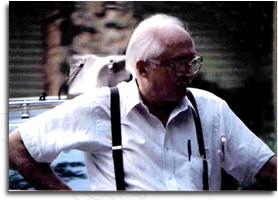Home ~ Contents ~ Archives ~ Advertising ~ Credits ~ Links ~ Contact Us
PAGE 4
4. Did you finish this dog yourself or have a handler? I showed and finished several Afghan Hounds of my parents. The IG I showed as a special and had many group placements on her She had been finished by Michele Billings then Leathers.
5. Do you think handlers help or hurt the breed? Since I am a professional handler, I would say they help the breed and hurt them. Over the years I have been showing whippets I have become involved in several different kennels, the first one was Kirklea, then Hound Hill. Both Larry and Cora were instrumental in shaping me. Of course, Dr James Gray, “Elysian” was my client, mentor, second father, advisor and part of the debate team that shaped my whippets for almost 30 years. The vision that I have for my breed stays with me because of these strong influences of aesthetics. My mother and father both artists and great breeders, Longlesson, made it possible for me to achieve what I did as a handler. In that way I have helped my breed, bringing dogs to the forefront and encouraging especially Jim to let his dogs be shown and seen.
On the other side of the coin, I have made dogs successful that probably shaped our breed in their own way. I have been a part of what has changed the whippet over the years in it’s function. My generation of breeders and handlers started running with a breed that was shown at a walk until the early 70’s, and has brought about this trotting breed with constant ears and showiness. Because I have finished dogs that maybe shouldn’t have, for what ever reason, including some of my own of course, I have hurt the breed by drawing attention away from their earlier porcelain statue period.
On the other side of the coin, I have made dogs successful that probably shaped our breed in their own way. I have been a part of what has changed the whippet over the years in it’s function. My generation of breeders and handlers started running with a breed that was shown at a walk until the early 70’s, and has brought about this trotting breed with constant ears and showiness. Because I have finished dogs that maybe shouldn’t have, for what ever reason, including some of my own of course, I have hurt the breed by drawing attention away from their earlier porcelain statue period.

Dr. James Gray
6. Do you feel you have made any improvements with your breeding program?
I still want it all as a breeder and a handler... A beautiful whippet that can move. It is my hope that I am still working towards this goal. In my own dogs, I work hard at this.
When we started, whippets were very hackney gaited and very short in length. It was a constant battle to get rid of that hackneyed front. Many of them were very straight in front and that is still a bad problem. I hope to maintain a smooth shape, the same in movement and standing, still able to do their jobs.

Hound Hill Paul Scarlett
One of the first dogs that Jan
showed for Jim.
One of the first dogs that Jan
showed for Jim.